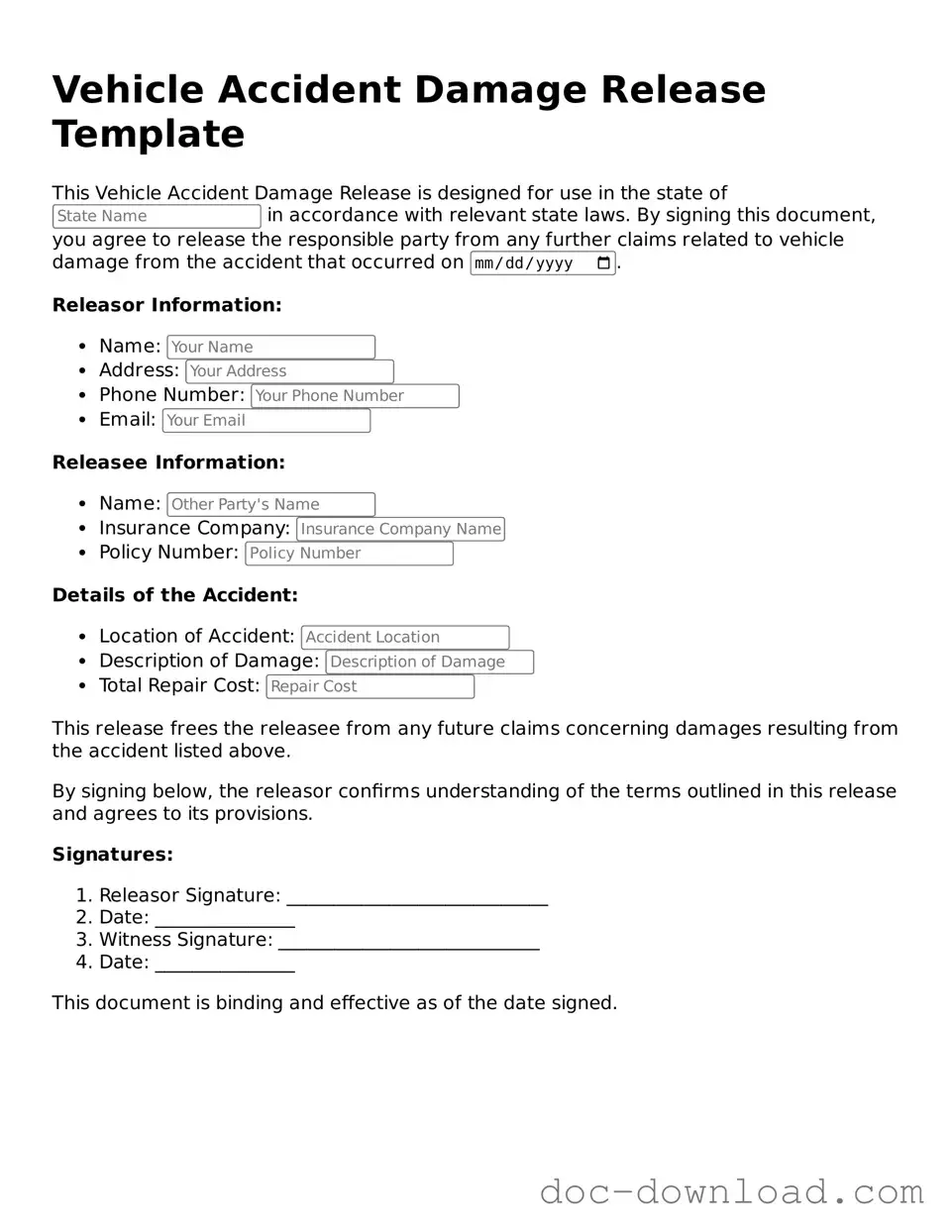The Vehicle Accident Damage Release form shares similarities with a Personal Injury Release form. Both documents are designed to protect one party from future claims after an incident. In a Personal Injury Release, the injured party agrees not to pursue further legal action against the responsible party in exchange for compensation. Similarly, the Vehicle Accident Damage Release form involves a release of liability regarding damages to a vehicle after an accident.
The Vehicle Accident Settlement Agreement is similar to the Vehicle Accident Damage Release form because both documents are used to settle disputes following a vehicle accident. In this agreement, one party typically agrees to pay a sum of money to the other in exchange for the release of any future claims related to the accident. Just like the Damage Release form, it aims to close the case and protect both parties from further liabilities. To better understand the legal implications involved, parties may also want to refer to a Hold Harmless Agreement, as it provides additional protections in transactions and agreements involving potential liabilities.
Another related document is the General Release of Liability. This form is broader in scope, releasing one party from any and all claims, whether known or unknown. Like the Vehicle Accident Damage Release, it aims to prevent future legal disputes. The key difference lies in the specific focus on vehicle damage in the latter, while the General Release covers a wider range of potential claims.
The Settlement Agreement is also akin to the Vehicle Accident Damage Release. This document formalizes an agreement between parties to resolve a dispute, often involving compensation for damages. Both forms signify that the parties have reached an understanding and agree to forgo any further claims related to the incident.
A Waiver of Liability form is another document that bears resemblance to the Vehicle Accident Damage Release. This waiver is often used in recreational activities, where participants acknowledge the risks involved and agree not to hold the organizer liable for injuries. In both cases, the intent is to limit liability and protect one party from future claims.
The Indemnity Agreement is similar as well. This document involves one party agreeing to compensate another for any losses or damages incurred. While the Vehicle Accident Damage Release focuses on vehicle-related incidents, both documents aim to clarify responsibility and limit liability in the event of future claims.
The Release of Claims form is another document that parallels the Vehicle Accident Damage Release. This form is used to relinquish any claims against another party, often in exchange for compensation. Both documents serve to finalize an agreement and prevent further legal action related to the specified incident.
The Non-Disclosure Agreement (NDA) can also be compared to the Vehicle Accident Damage Release. While NDAs primarily focus on confidentiality, they similarly aim to protect one party from future claims related to disclosed information. Both documents create a sense of security for the parties involved, ensuring that certain matters remain settled.
A Liability Release for Minors is another document that resembles the Vehicle Accident Damage Release. This form is used when a minor participates in an activity, and a parent or guardian agrees to release the organizer from liability. Both documents protect against future claims, emphasizing the importance of understanding the risks involved.
The Consent to Treat form is also similar in that it involves agreeing to certain conditions. In medical contexts, it allows healthcare providers to treat a patient while limiting liability for potential complications. The Vehicle Accident Damage Release does the same by allowing for the settlement of damages while limiting future claims.
Lastly, the Property Damage Release form is closely related. This document specifically addresses damages to property, similar to how the Vehicle Accident Damage Release focuses on vehicle damage. Both forms ensure that parties agree on the resolution of damages and prevent future claims regarding the same issue.
